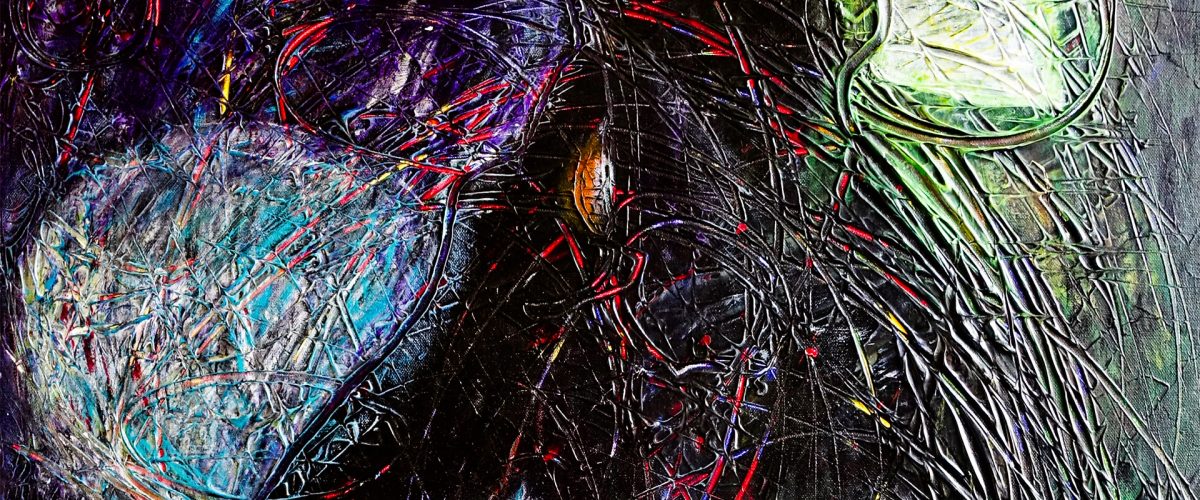Who is this man?
Taken “normally”, night is supposed to be a time of break, of dreaming, of reposing… When everything goes right, night passes rather quickly and we wake up fresh into new day. But how often for so many people the life itself is becoming dark, like heavy, thick night? Loneliness, insecurity, disappointments, one’s own weaknesses, difficult life situations, broken relationships, sense of lost and despair, pandemic…, all of these are like a night without a sleep. It seems endless.

The painting we can see is rather dark. Apparently, it is divided in two parts. Left one resembles a room with a small window. The right one, seems to be almost like the universe or a space with stars and blue planet. If at first glance the painting seems heavy, closer view reveals many curves, sparkling lights. If you could touch the painting, you would feel the realness of those curves, they deepness. They are everywhere like a dynamic web.
Are there two sources of light or there is a light spectrum manifesting itself via what might be a window (left), a planet (right) and many curves? I opt for second explanation. Just one light, but manifold appearance.
The darkest part of the picture is a silhouette of a man. His gesture is probably kneeling. His left hand points to his left ear, as if he was making a phone call. We do not see his face which is facing light. Who is he? Why he lacks the light? To whom he is speaking to? In other words, who is this man of no form or charm to attract us, no beauty to win our hearts? (cf. Isaiah 53:2-3). He, who has accepted our darkness in order to give us new life? (cf. 2 Cor 5:21). Isn’t it a paradox, that the one who said “I am the light of the world” (John 8:12) is represented here as the darkest part of the picture? Could be Jesus “in truth” represented in this way?
I am inclined to see the picture as a dynamic collage of three events: Transfiguration (Matthew 17:1-9), Gethsemane (Luke 22:40f) and Resurrection (Matthew 28:1f). We do not see the face of a man; in a similar way we cannot fully approach the mystery those events represent. The viewer, me, you, is in fact the one who is invited to enter into those events. At the same time, accepting the invitation, you or me, he or she is the one who is witnessing them. Moreover, I, you, as a viewer, am encouraged to recognise myself there in order that my night will experience dawn. How it is possible? The key offers the Easter with its proper hermeneutics: however darkness seems to be dominant, dawn brings the light and with it hope.




